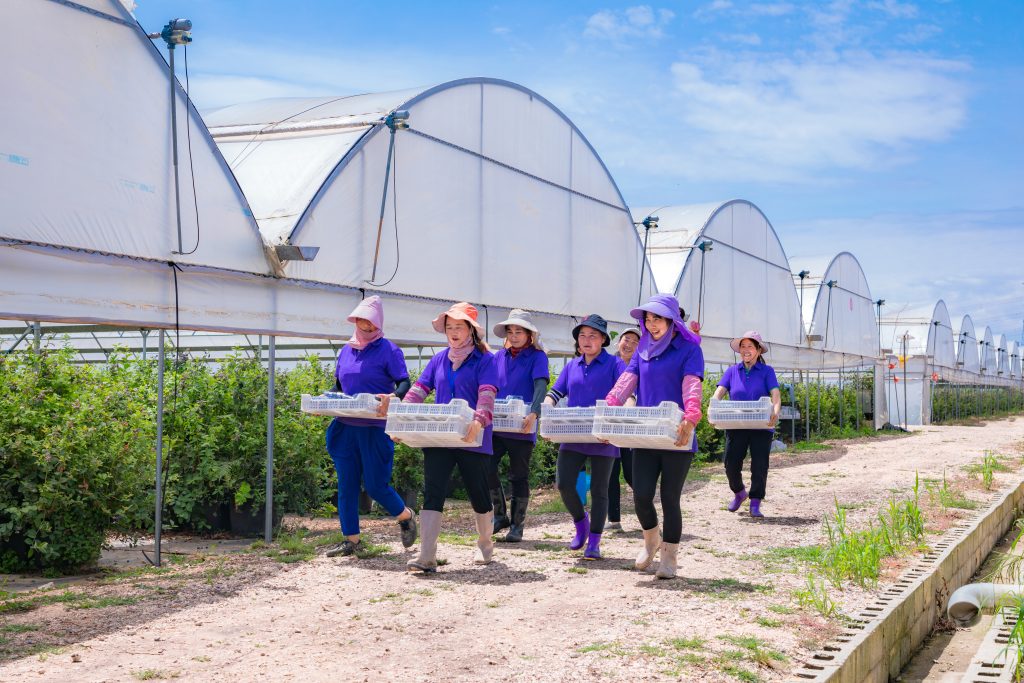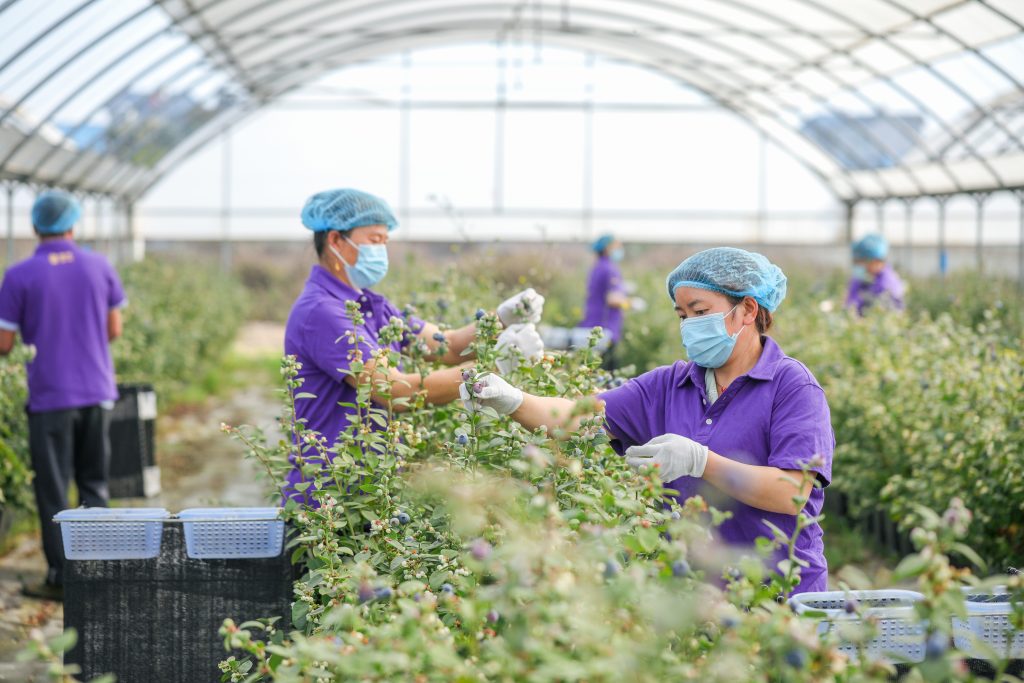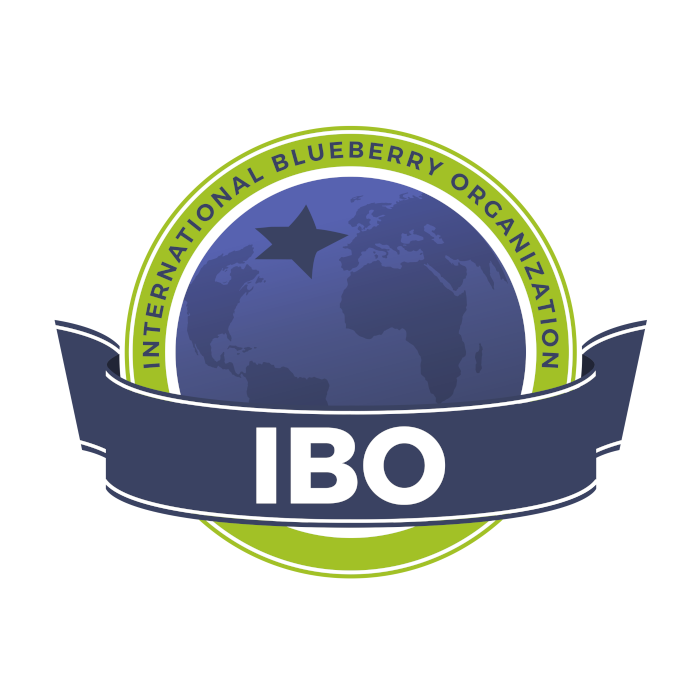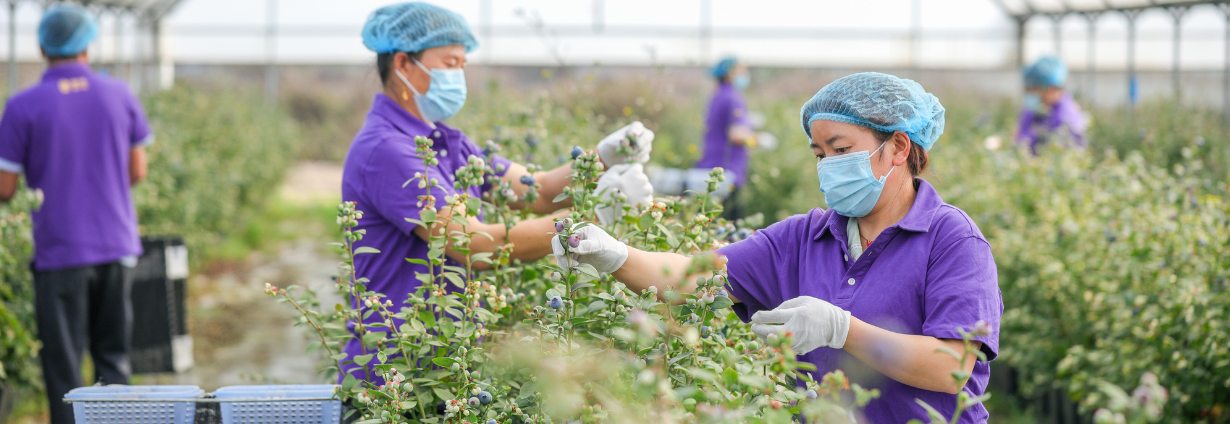Interview with Jason Zhang, President Blueberry Committee of China
- . June 2025
“China’s blueberry industry benefits from vast market demand and strategic geographical advantages. With these advantages, we aim to consolidate our local market presence and actively pursue global expansion.”
Over the past decade, China has experienced rapid growth in blueberry production, establishing itself as an important player both locally and internationally. The blueberry sector in China continues to gain prominence on a global scale, and the recent inclusion of the Blueberry Committee of China in the International Blueberry Organization (IBO) marks a key step in the country’s emergence as one of the world’s leading blueberry producers.

We spoke with Jason Zhang, president of the Blueberry Committee of China, about the factors driving this development, evolving domestic consumption, as well as the industry’s focus on improving efficiency, sustainability, product quality, and the opportunities that lie ahead.
How do you assess China’s recent incorporation into the IBO and what impact do you think it will have on strengthening the country’s position in the global blueberry industry?
The IBO is a globally recognized institution in the blueberry industry. The China Blueberry Committee’s accession to the IBO marks a pivotal strategic step in the development of China’s blueberry business, a move we highly commend and deeply honor.
Since the successful hosting of the Global Blueberry Conference in Yunnan in 2017, China’s blueberry industry has embarked on a rapid growth. Through the IBO, China will collaborate globally to share knowledge and best practices, boosting the blueberry industry’s growth. This move strengthens China’s role in the global blueberry value chain, transforming it from a fast-growing producer and consumer into a key contributor, bringing new energy to the industry.
What does this membership represent in terms of collaboration, information exchange, and international visibility?
Joining the IBO means greater responsibility for China in global cooperation. Being part of the family, China will actively share its blueberry industry updates with the IBO while learning from global best practices in production and consumption. This will help meet domestic demand for high quality blueberries and drive China’s market toward greater maturity and healthy development while amplifying its role in shaping the global blueberry industry.
What is China’s current approach regarding blueberry production? Is it more focused on supplying the domestic market or boosting exports?
China’s blueberry industry currently focuses on domestic demand for high-quality berries. While exports were limited in the past due to varietal constraints, recently situations have changed a lot by introducing new varieties and expanding new farms in different areas with advanced technical practices, facilities, etc. However, strong domestic demand remains the key driver, with exports expanding gradually alongside local supply.
How much of China’s total blueberry production is allocated to local consumption and how much is currently exported? What are the main export destinations?
Over 95% of China’s total blueberry production is consumed domestically, while exports are growing rapidly. Current key export destinations include Hong Kong, Thailand, Singapore, Malaysia, Indonesia, and other Southeast Asian markets. Rising demand in these regions presents market opportunities for Chinese blueberry exporters.
What are the strategic priorities of the Blueberry Committee of China for the coming years?
The China Blueberry Committee will prioritize building a healthy, orderly, and sustainable blueberry industry by focusing on three key initiatives:
Strengthening food safety management, enhancing monitoring systems and standard development for blueberries to ensure food safety; Protecting varietal rights by emphasizing legal compliance in production and raising awareness among growers about intellectual property protection; and connecting China with global breeders through the IBO platform to drive industry upgrades, and foster sustainable development.
Which areas within the blueberry value chain still need to be strengthened or further developed in China?
At a production level, varietal infringement is still a problem. We will establish sound mechanisms for varietal introduction and management, strengthen IP protection and align with international breeders to introduce more advanced varieties to China which will provide safeguards for domestic growers, marketers and consumers.
In logistics, China’s blueberry industry lags behind leading international counterparts in cold-chain transportation. We will oversee and guide enterprises to increase investment in cold-chain infrastructure, building a comprehensive end-to-end system to ensure consistent quality from farm to consumer, thereby boosting market competitiveness.
On the consumer side, market cultivation is critical for industry growth. We will conduct continuous multi-scenario consumer education—through tasting events, sports event sponsorship, and other campaigns to promote the nutritional value of blueberries. This will increase repeat purchases, attract new consumers, and expand market share.
How can the IBO platform help China align with global standards and best practices?
The China Blueberry Committee will actively engage in IBO activities to enhance communication, adopt advanced global blueberry technologies, and promote international cooperation in varietal development, farming techniques, and processing standards.
We are hoping the IBO will strengthen its influence within China, helping more participants and customers to know about the blueberry or fresh fruits business and learn from exceptional leaders and business models.
What have been the most important milestones in the development of China’s blueberry industry so far?
The development of China’s blueberry industry has had two key milestones:
In 2017, the Global Blueberry Conference in Yunnan provided an opportunity to shift China’s traditional blueberry business toward higher-quality production and propelled the industry onto the global stage.
In 2024, the establishment of the China Blueberry Committee marked a new phase of structured, goal-oriented development under a dedicated leadership.
What factors make China a relevant competitor in today’s global blueberry market?
China’s emergence as a major global competitor in the blueberry market stems from two key drivers: A massive domestic market fueled by rising living standards, where growing consumer demand for blueberries has created vast opportunities for industry expansion; and being one of the largest countries in the world with multiple climates. China surpassed the US a few years ago, becoming the world’s largest blueberry producer.
Is China’s production approach mainly geared toward supplying the local market or developing its exports?
China’s blueberry industry benefits from vast market demand and strategic geographical advantages, enabling cultivation of both southern and northern highbush varieties from November to July. Proximity to Asian consumer markets also ensures fresh, efficient transportation, meeting domestic supply while boosting export opportunities. With these advantages, we aim to consolidate our local market presence and actively pursue global expansion.
Southeast Asian markets currently represent the most promising growth opportunity for Chinese blueberry exports. Key drivers include:
Similarities in flavor preferences: consumer flavor preferences in these regions are close to China, resulting in a higher acceptance of domestically cultivated blueberries.
Logistical advantages: geographic proximity enables efficient transportation, ensuring optimal quality control and supply chain reliability.

Are you exploring diversification options, such as new varieties, formats, or value-added products?
Yes, we remain committed to pioneering new blueberry varieties, introducing premium cultivars to diversify China’s blueberry portfolio and meet consumer preferences. Concurrently, we are amplifying R&D on processed products, and exploring innovative applications to propel demand and enhance the industry’s value-added potential.
What are the main technological innovations currently being implemented in China?
Blueberry growing has been leveled up since 2017, especially in evergreen growing, with automated fertilizer dispensers, precision irrigation systems, high tunnels, substrate cultivation etc. More recently, many companies are applying AI or digital management systems on farms, which is making it easier for workers and is improving efficiency. Some leading growers have even developed algorithms to help them make decisions on irrigation management or with production predictions.
Although, traditional northern highbush has not changed much, we have done lots of trials on cultivation in different locations to extend the season and improve fruit quality. For example, growing low or middle-chill varieties at high or low altitudes, and low-chill varieties in greenhouses in high latitude areas.
What strategies are being applied to advance toward more sustainable and environmentally responsible production?
The China Blueberry Committee has responsibilities to lead the industry in the right way. One of our strategies is to encourage biological pest control and reduce chemical residues. On the marketing side, we are educating customers through displays and campaigns. We are also encouraging recyclable packaging and bulk sales, as well as the collection and sharing of data to integrate strategic planning.
How are producers and exporters adapting to the demands of international markets in terms of quality, safety, and certifications?
To be honest, I think we are doing pretty well. Growers and marketers see the opportunities for cultivating blueberries locally and marketing fruits home and abroad, and they have plans for further development.
To meet global standards for quality, safety, and certification, we are focusing on three aspects:
- Building a quality control system across the supply chain by establishing standards spanning cultivation, harvesting, processing, and exports, with biannual updates aligned with target markets. We also support third-party testing labs to ensure compliance.
- Promoting Global Good Agricultural Practices (GLOBALG.A.P.) certification by aligning with international production standards through national agricultural platforms providing end-to-end guidance.
3) Developing a traceable pesticide residue system by implementing blockchain and IoT-based traceability, and deploying smart sensors to track pesticide use, dosage, and locations.
These efforts will enhance China’s compliance capabilities, shift the industry toward quality-driven growth, and cement its role as a key global player.

06.06.2025
This is an IBO Exclusive content.






